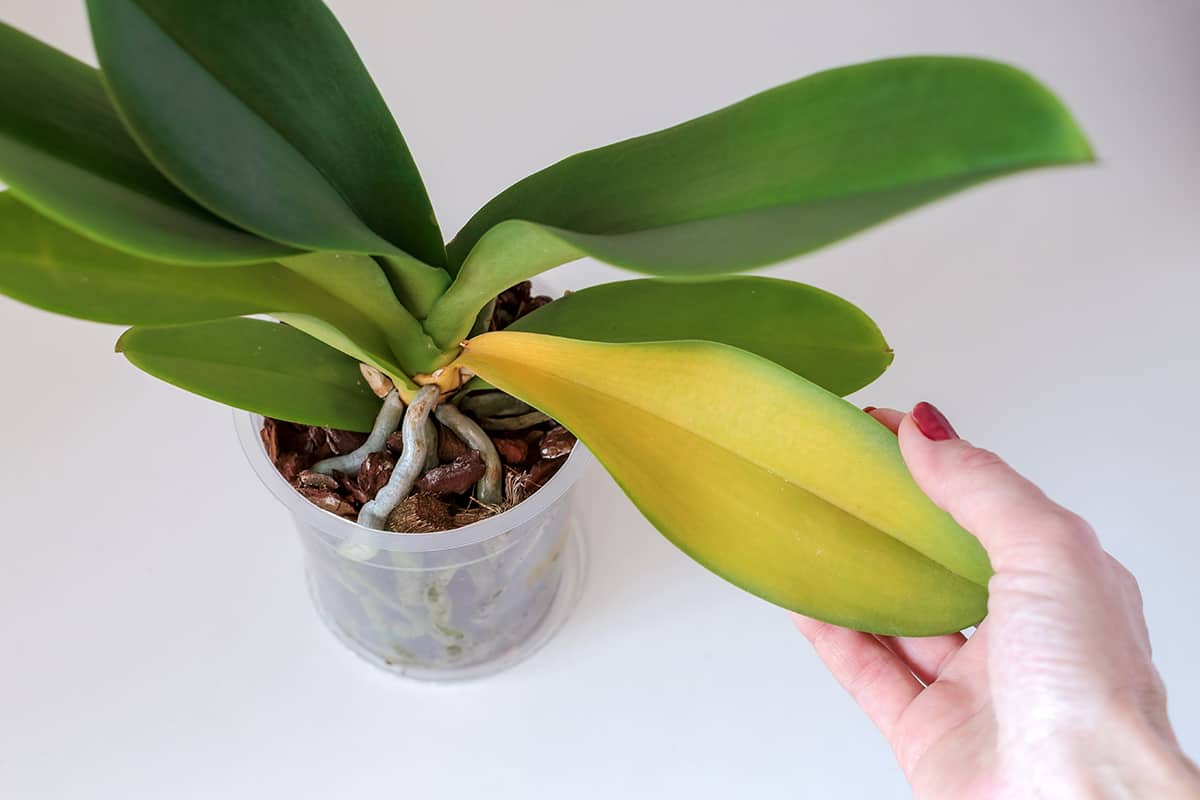Houseplants add beauty and purify the air in your living space, but it can be disheartening to see their leaves turn yellow. Understanding the causes and learning how to fix these issues will help you keep your plants healthy and vibrant. In this article, we will discuss common reasons for yellowing leaves and effective solutions to address each problem.
Table of Contents
Understanding Photosynthesis and Chlorophyll
To grasp why houseplant leaves turn yellow, you need to understand the roles of photosynthesis and chlorophyll in a plant’s life. Photosynthesis is a key process in which plants convert sunlight into energy. They use sunlight, water, and carbon dioxide to create glucose, which helps in their growth and reproduction. In this process, chlorophyll plays a crucial role.
Chlorophyll, a green pigment found in plant cells, absorbs light from the sun and facilitates photosynthesis. During this process, various pigments within leaves determine their color. When chlorophyll is abundant, leaves appear green. As chlorophyll decreases, for various reasons, leaves can change color, often turning yellow.
Harvard Forest explains, other pigments such as carotenoids and anthocyanins can mask the effect of chlorophyll. These pigments can result in leaves turning yellow, orange, or red. However, when chlorophyll breaks down, other pigments can’t compensate, leading to those yellow leaves on your houseplants.
Common Causes of Yellowing Leaves
Overwatering
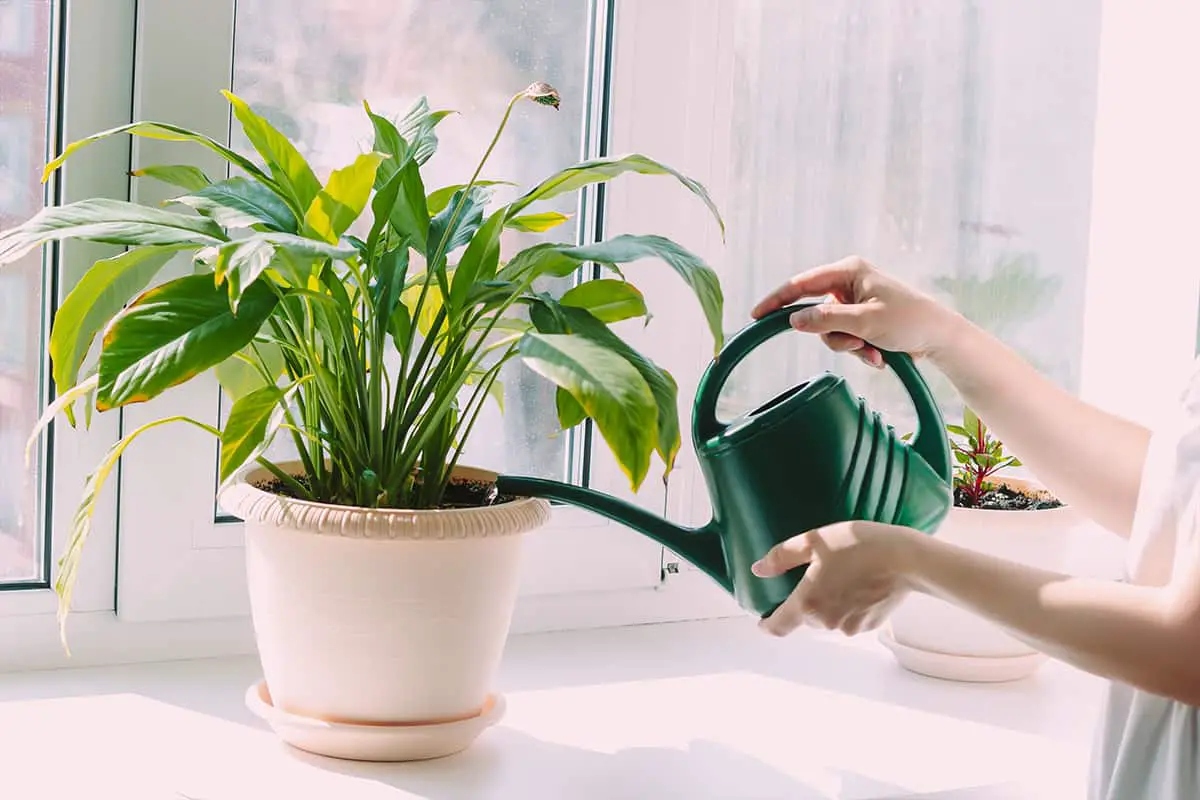
Overwatering your plants can result in yellowing leaves, as roots can’t take up oxygen efficiently, leading to stress. To avoid this, make sure you check the moisture in the soil before watering and follow a proper watering schedule.
Underwatering
On the other hand, underwatering your plants can also cause yellowing leaves. Insufficient water can stress the roots, limiting nutrient uptake. To fix this, you need to determine the plant’s water requirements and ensure you’re meeting them regularly.
Poor Drainage
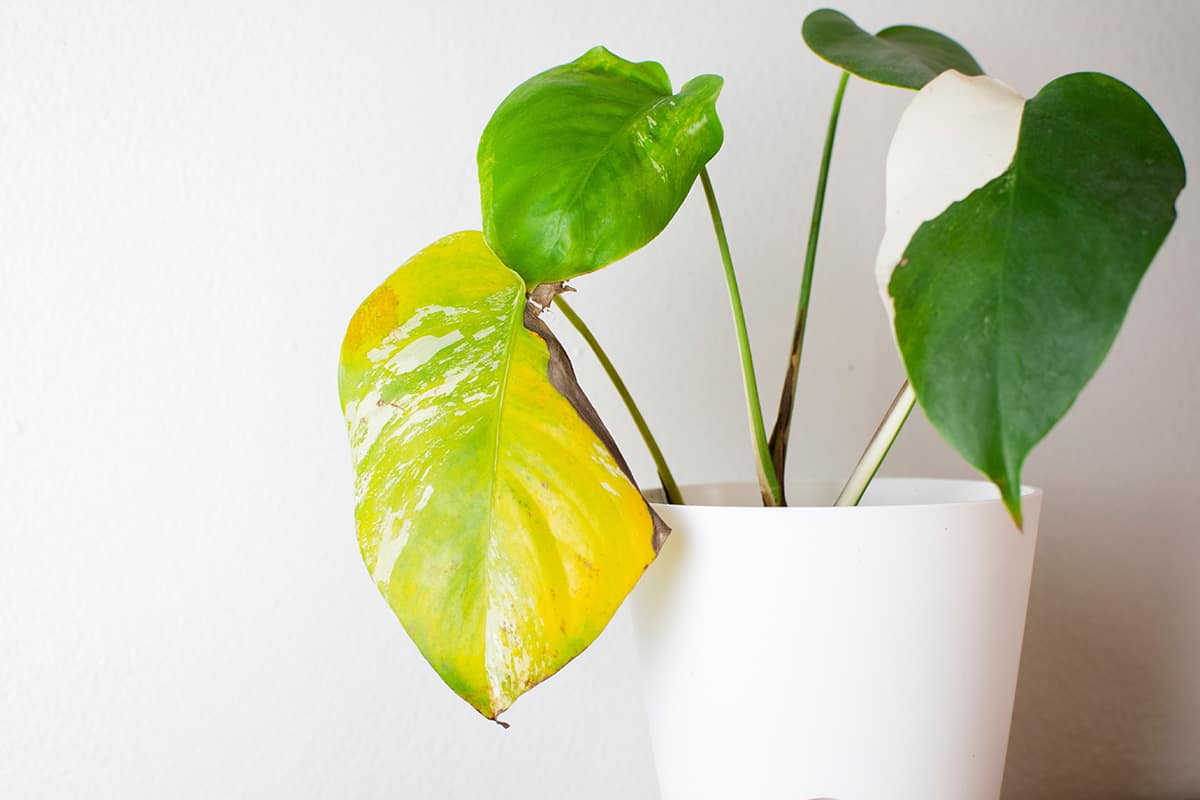
Poor drainage in the pot or the soil can lead to root rot. This subsequently causes the plant’s leaves to turn yellow. Ensure the pot has drainage holes and use a well-draining soil mix to promote healthy root growth.
Nutrient Deficiencies
Yellow leaves can be a sign of nutrient deficiencies, such as a lack of nitrogen or potassium. To fix this issue, consider using a balanced fertilizer specifically formulated for houseplants and follow the recommended application rates.
Pest Infestation
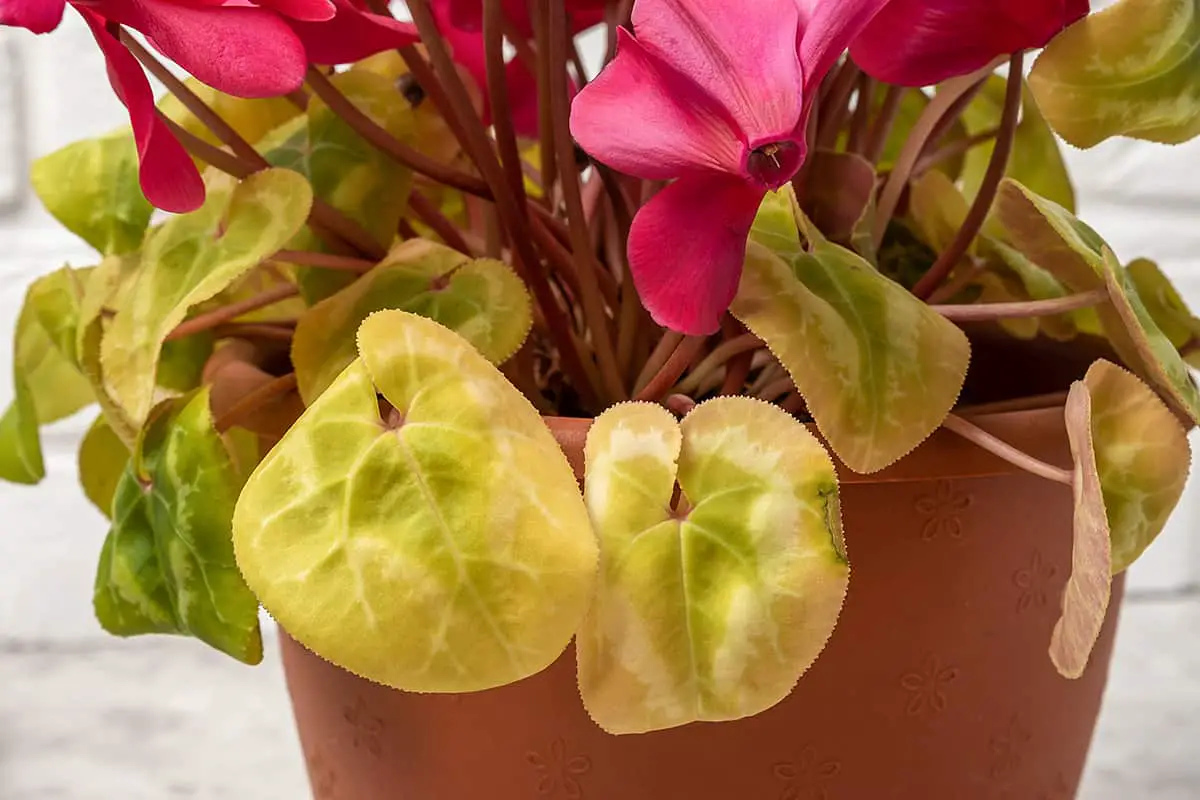
Pests, such as spider mites, aphids, and scale insects, can suck on plant sap, leading to yellowing leaves. To control pests, keep your plants clean, and use appropriate pest management techniques when necessary.
Diseases
Certain fungal and bacterial diseases can also cause yellow leaves on houseplants. Early signs include small brown spots on leaves, which spread as the condition worsens. To help prevent and treat diseases, maintain good hygiene, sufficient air circulation, and proper watering practices.
Environmental Stress
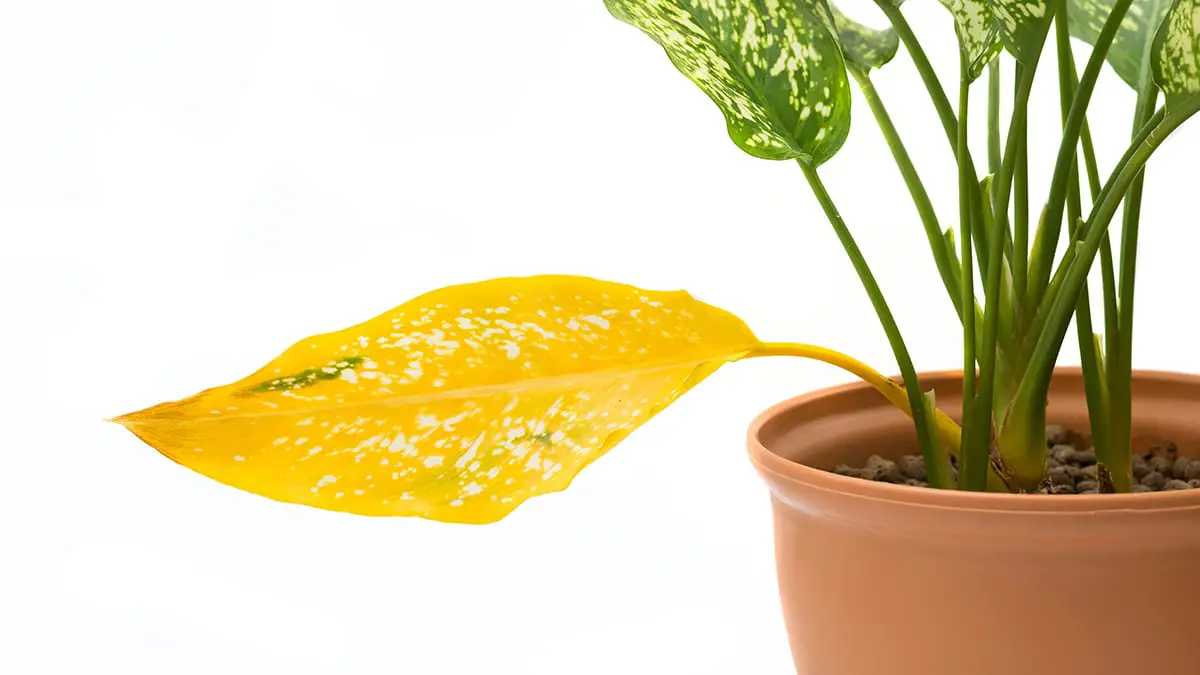
Finally, environmental stress factors, such as sudden changes in temperature or humidity, can trigger leaf yellowing. To avoid this, always keep your plants in a suitable environment that mimics their natural habitat and maintain consistent growing conditions.
Diagnostic Tips
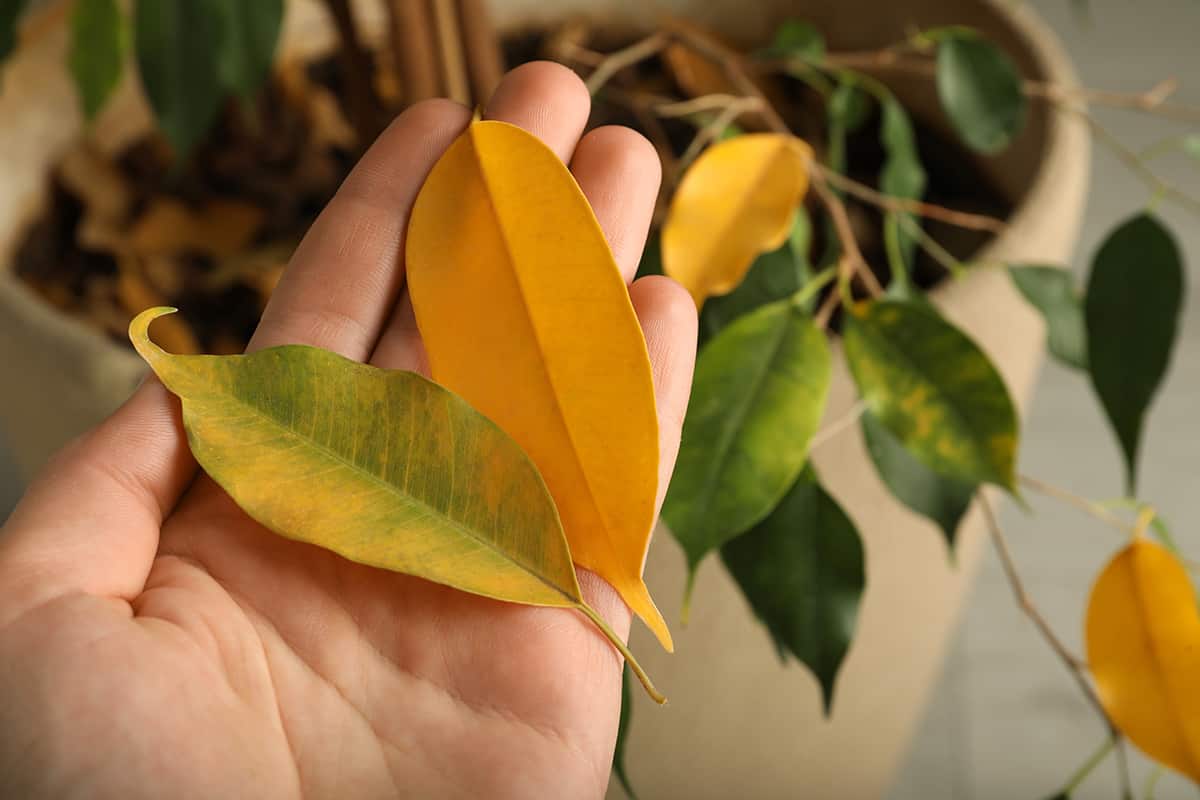
Examining Leaf Patterns
When your houseplant leaves turn yellow, observe the leaf patterns. This helps you identify the cause. A common issue is a sudden change in light intensity that may lead to leaf drop. Another cause is low humidity, which results in browning and dropping of leaves. Stay alert to any changes in your houseplant environment.
Soil Moisture Assessment
Check your houseplant’s soil moisture regularly to determine if the problem is related to watering practices. Over-watering or under-watering can cause yellow leaves. Touch the soil and monitor its dampness. Adapt your watering routine to provide the right amount of moisture for your houseplant.
Checking for Pests and Diseases
Take a closer look at your houseplant leaves for any signs of pests or diseases. Insects, such as spider mites or aphids, might cause leaf drop. Additionally, fungal infections can lead to yellow or brown leaves. If you notice any of these issues, address them promptly to ensure your houseplant’s health.
Treatment & Solutions
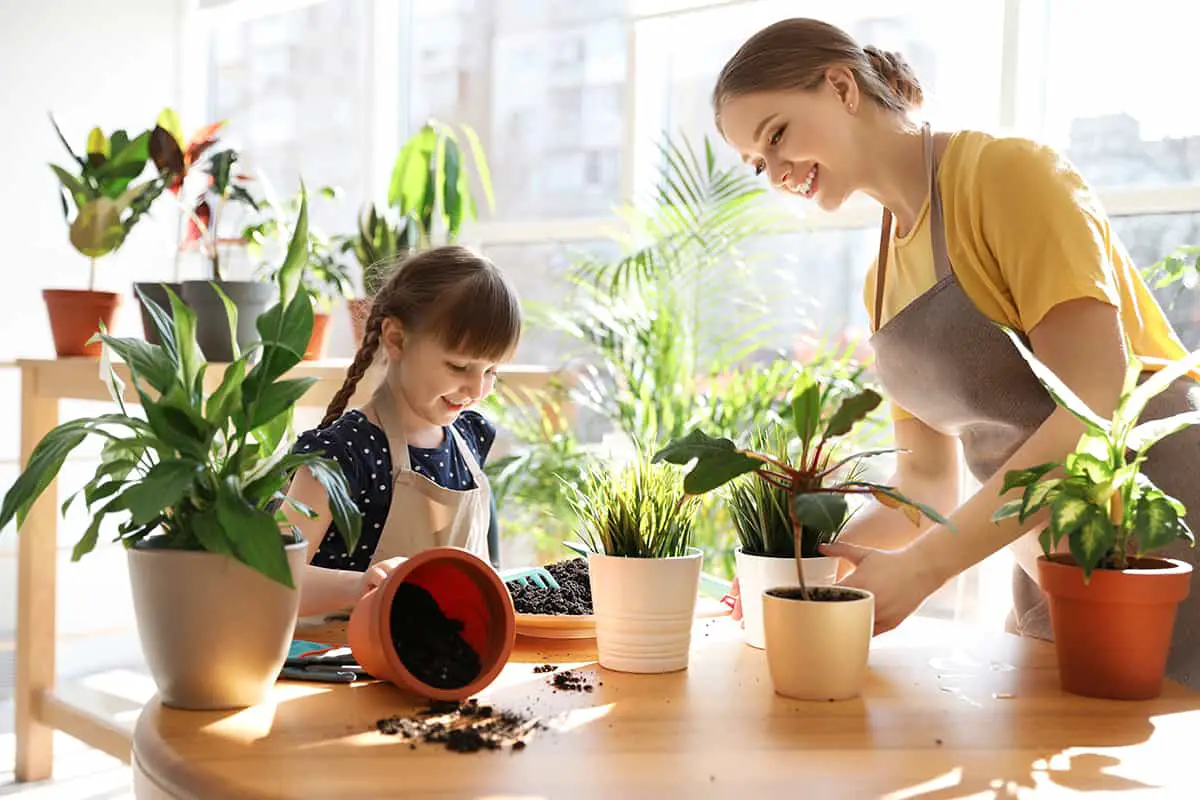
Adjusting Watering Habits
One of the primary reasons for yellowing leaves in houseplants is poor watering habits. To maintain healthy plants, you need to find a balance between over-watering and under-watering. Always remember to check the soil’s moisture before watering. If the soil feels dry, it’s time to water; if wet, wait for it to dry out a bit.
Soil Improvement
Another factor that can impact your plant’s health is the quality of the soil. Ensure that your houseplant is planted in well-draining soil. This will help prevent issues like root rot and allow the plant to better absorb essential nutrients. You can improve your plant’s soil by adding organic matter like compost or by re-potting with new soil when needed.
Using Fertilizers Correctly
A lack of adequate nutrients might also lead to yellowing leaves. To address this, ensure you’re using fertilizers correctly. Check the fertilizer’s instructions to know the appropriate amount and frequency for application. Over-fertilization might cause similar symptoms as under-fertilization, so be cautious not to overdo it.
Pest and Disease Control
Finally, your houseplant could be experiencing stress due to pests or diseases. Keep an eye out for signs of infestation, such as tiny insects, webs, or discolored leaves with possible lesions. If you notice any of these signs, use a suitable organic pesticide or fungicide to treat your plant. Always follow product instructions carefully and ensure you maintain a clean and hygienic environment around your houseplants to prevent future issues.
